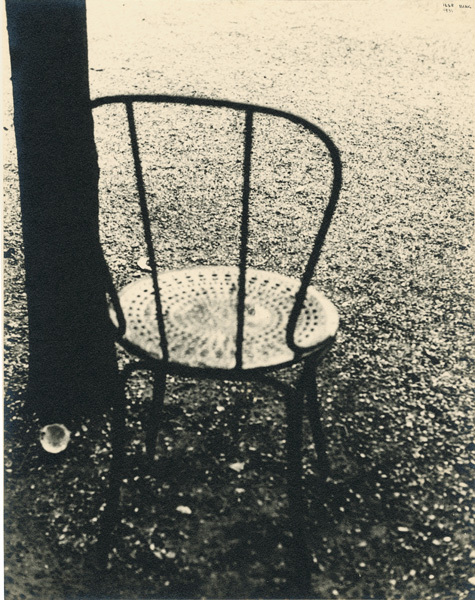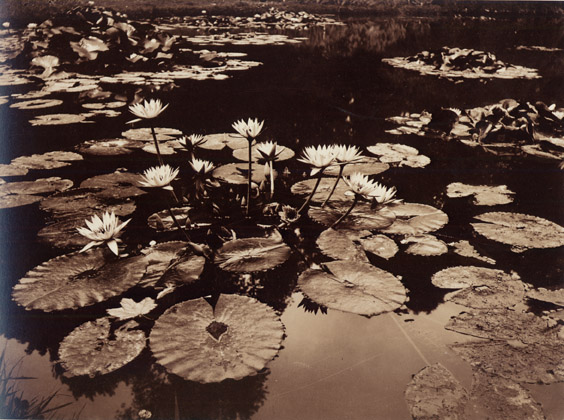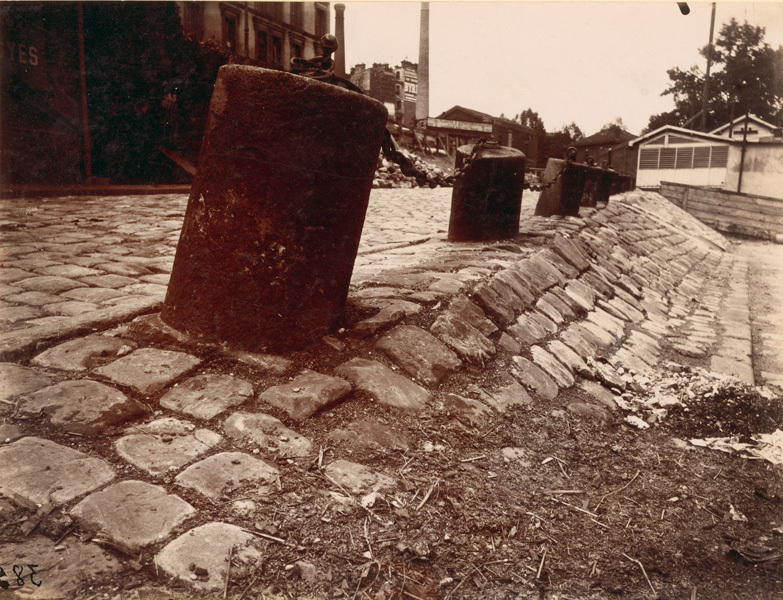THE FRICK PITTSBURGH
February- May 2019
In the early 20th century , between the two world wars, Paris saw a fervor of change. From 1910 to 1940, the city became a creative epicenter for artistic exploration, attracting international avant-garde artists —including photographers experimenting with Surrealism, Modernism, and the new reportage.
French Twist: Masterworks of Photography from Atget to Man Ray, features 100 vintage prints from this golden age of French photography and explores the variety and inventiveness of native and immigrant photographer s working in France in the early 20th century.
This exhibition presents a number of themes that capture the flavor and night life of Paris at this exciting moment. “Life of the Streets,” “Diversions ,” and “Paris by Night” are just some of the topics that these masterful photographs explore.
Visitors will experience Eugène Atget’s lyrical views of Paris streets and gardens, Man Ray’s surrealist experiments, and Henri Cartier-Bresson’s pioneering photojournalism, as well as works by Ilse Bing, Brassaï, Jacques -Henri Lartigue, André Kertész, and Dora Maar. Many of these artists settled in France for life , while others, fleeing the Nazis, brought their Paris ‐ trained sensibilities and influences to America.
In the early 20th century , between the two world wars, Paris saw a fervor of change. From 1910 to 1940, the city became a creative epicenter for artistic exploration, attracting international avant-garde artists —including photographers experimenting with Surrealism, Modernism, and the new reportage.
French Twist: Masterworks of Photography from Atget to Man Ray, features 100 vintage prints from this golden age of French photography and explores the variety and inventiveness of native and immigrant photographer s working in France in the early 20th century.
This exhibition presents a number of themes that capture the flavor and night life of Paris at this exciting moment. “Life of the Streets,” “Diversions ,” and “Paris by Night” are just some of the topics that these masterful photographs explore.
Visitors will experience Eugène Atget’s lyrical views of Paris streets and gardens, Man Ray’s surrealist experiments, and Henri Cartier-Bresson’s pioneering photojournalism, as well as works by Ilse Bing, Brassaï, Jacques -Henri Lartigue, André Kertész, and Dora Maar. Many of these artists settled in France for life , while others, fleeing the Nazis, brought their Paris ‐ trained sensibilities and influences to America.
From the lyrical architectural views of Atget to the Surrealist inventions of Man Ray and Dora Maar, from the boyish wonder of Lartigue to the crepuscular moodiness of Brassaï, from the elegant still lifes of Kertész to the sophisticated street theater of Cartier-Bresson and Ilse Bing, all major facets of French photography are surveyed and celebrated.
Main sections in the exhibition:
Eugène Atget
The exhibition opens with one of the most significant figures in the history of photography, Eugène Atget, whose work influenced a range of artists from Surrealists to documentary photographers. This selection encompasses pictures of city streets, architectural details, and the gardens at Versailles and includes one of his most famous photographs,
Boulevard de Strasbourg, Corsets, 1912
Eugène Atget (1857–1927)
Printing‐out paper, 8 3/4 x 7 inches
Collection of Michael Mattis and Judith Hochberg
Boulevard de Strasbourg, Corsets (1912).
Eugène Atget Nymphaeas, Versailles, ca. 1910
French 1857 - 1927
Bassin de la Villette, ca. 1900
albumen print
6 x 8 inches
Collection of Michael Mattis and Judith Hochberg
© Eugene Atget Estate
La vie de la rue (Life of the Street)
This section includes images of the streets and buildings of Paris —of the bustling Champ -de -Mars and the deserted Avenue du Maine —and features a large selection of photographs by Ilse Bing. In her modernist views of urban architecture, Bing provides a modern take on the old city through unexpected angles and dramatic cropping.
Divertissement (Diversions)
Divertissement focuses on the myriad amusements available in the City of Light s. Lartigue provides an insider’s view of upper-class life in the Belle Epoque, while Bing and Brassaï chronicle the attractions of the dance hall, the theater, and the street.
Henri Cartier-Bresson
The master of the “decisive moment” and one of the most significant photojournalists of the 20 th century, Henri Cartier -Bresson is featured along with 17 famous photographs from his travels around the world. This section includes his stellar images of the Spanish Second Republic and his iconic view of the coronation of George VI in London.
Les basses classes (The Lower Classes)
Between the wars, photographers from Ilse Bing to Andre Kertész to Brassaï chronicled lives of poor Pari sians, often bringing a Modernist sensibility, rather than a reformer’s eye, to scenes of urban poverty.
Paris de nuit (Paris by Night)
In 1933 Brassaï released his photo book Paris by Night, which chronicled the city’s streets and amusements after dark. The book became an immediate success and Brassaï became famous as the foremost photographer of the city’s bars and brothels, performers , and prostitutes.
L’art pour l’art (Art for Art’s Sake)
This section focuses on the technical experimentation and virt uoso technique of photographers including Pierre Dubreuil, Edward Steichen, and Pal Funk Angelo. It features examples of unusual techniques like cliché-verre , solarization, and oil printing.
Andre Kertész, Dora Maar, Man Ray
These three important photographers —all immigrants to Paris between the Wars and all involved in Surrealist movement —are featured in individual sections that highlight their most famous works. Kertész is represented by his photographs of the painter Piet Mondrian’s studio. Maar’s Surrealist street photographs capture her dark humor, and a full complement of Man Ray’s experimental and psychologically charged images summarize his photographic interests.
La figure (Portraits and Nudes)
La Figure showcases experimental approaches to the classic subject of the female nude, including a cameraless photograph and a solarization by Man Ray and a distortion created with fun-house -type mirrors by Kertész.
Kiki de Montparnasse, 1923 Man Ray (1890–1976) 11 x 8 3/4 inches Collection of Michael Mattis and Judith Hochberg © 2012 Man Ray Trust / Artists Rights Society (ARS), NY / ADAGP, Paris |
| Hyères, 1932 Henri Cartier‐Bresson (1908–2004) 7 7/8 x 11 5/8 inches Collection of Michael Mattis and Judith Hochberg © Henri Cartier-Bresson/Magnum Photos |
Coronation of King George VI, London, 1938 Henri Cartier‐Bresson (1908–2004) 14 x 9 1/2 inches Collection of Michael Mattis and Judith Hochberg © Henri Cartier-Bresson/Magnum Photos |
| Champ‐de‐Mars from the Eiffel Tower, 1931 Ilse Bing (1899–1998) 7 1/2 x 11 inches Collection of Michael Mattis and Judith Hochberg © Estate of Ilse Bing. Courtesy Edwynn Houk Gallery, New York |

- Ilse Bing, German 1899 – 1998, Chair, Champs Elysées, 1931, gelatin silver print, 11 1/8 x 8 3/4 inches. Collection of Michael Mattis and Judith Hochberg © Ilse Bing Estate
.jpg)
Ilse Bing, German 1899 – 1998, Cancan dancers, Moulin Rouge, 1931, gelatin silver print, 10 1/4 x 13 3/8 inches. Collection of Michael Mattis and Judith Hochberg © Ilse Bing Estate

